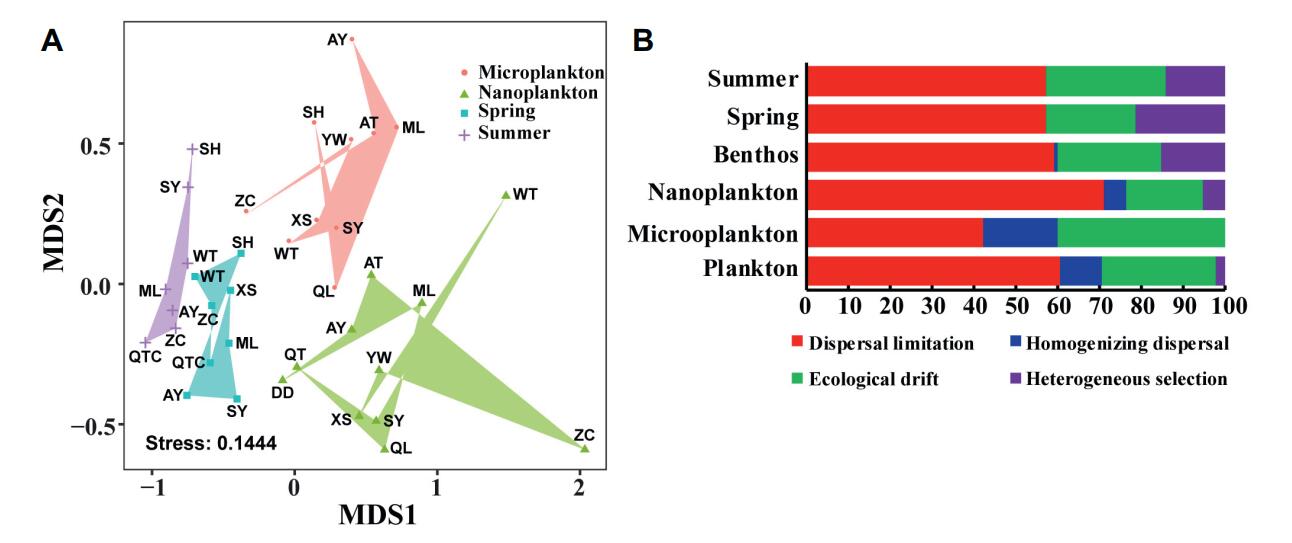Kong J., Wang Y., Warren A., Huang B.Q. and Sun P.. 2019. Frontiers in Microbiology, 10: 2640.
The intertidal zone occupies the shore between the high and low tide marks and is subjected both to natural forces and anthropogenic activities. Compared with the coastal ecosystem, studies comparing diversity and community structure of intertidal planktonic and benthic microeukaryotes are limited. Therefore, the ecological processes mediating their assemblies remain poorly understood. Environmental rRNA from two size fractions (nano- and microsized) of plankton and from seasonally collected (spring and summer) benthos, together with water and sediment chemistry and concentrations of heavy metals, were used to explore diversity and community structure of microeukaryotes in intertidal zones of southeast Fujian Province, China. Benthic microeukaryotes harbored signifcantly higher alpha-diversity than those of the plankton, whereas no distinct patterns of organism size/seasonal distribution were observed for either community. Community compositions differed signifcantly between planktonic and benthic microeukaryotes, with the former presenting size-fractionated discrepancies and the latter showing seasonal variation. Community turnover between planktonic and benthic microeukaryotes was mainly driven by stramenopiles and alveolates. Distance-decay patterns were found in both communities, with the rate of community turnover being higher for planktonic than benthic microeukaryotes. Among the environmental factors measured, the concentration of Cd and the water content of sediment were closely associated with benthic community variations, whereas none of the factors measured was identifed as being responsible for planktonic community variation. Phylogenetic null model analysis indicated that dispersal limitation was the most crucial ecological process mediating community assembly for both planktonic and benthic microeukaryotes in intertidal zones, with heterogeneous selection making a higher contribution to community variation of benthic than planktonic microeukaryotes. Stochastic processes, mainly dispersal limitation, were found to prevail in both communities. This study thus provides new insights into the diversity distribution and assembly mechanism of microeukaryotes in intertidal zones.

Figure 1. Distribution pattern and assembly mechanism of microeukaryotes in intertidal zones. Non-metric multidimensional scaling (NMDS) of intertidal microeukaryote communities based on Bray-Curtis distance (A). Quantifcation of ecological processes shaping microeukaryotes in intertidal zones (B). Microplankton and Nanoplankton represent size-fractionated water samples, while Spring and Summer represent sediment sampled in spring and summer, respectively; Plankton includes Microplankton and Nanoplankton, while Benthos includes samples collected in both Spring and Summer.

